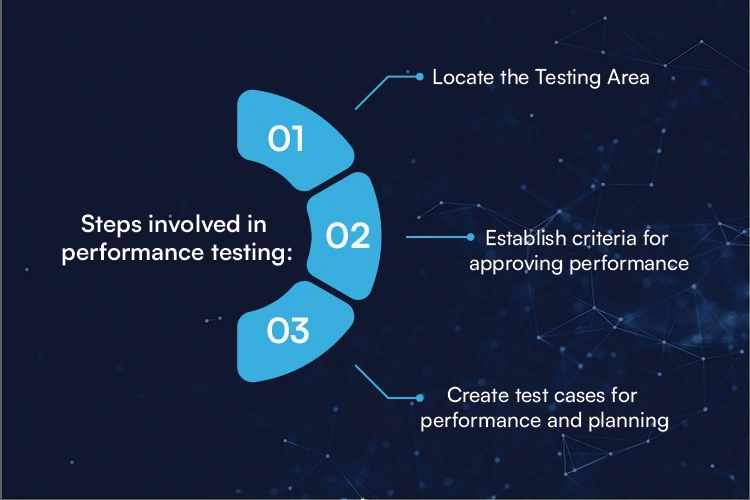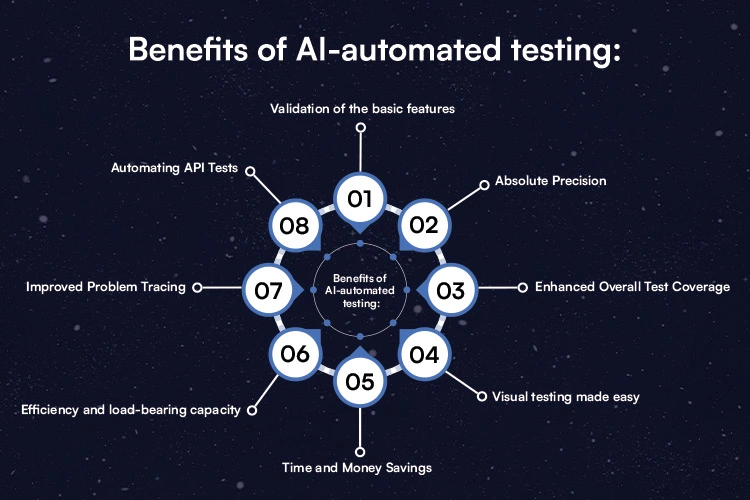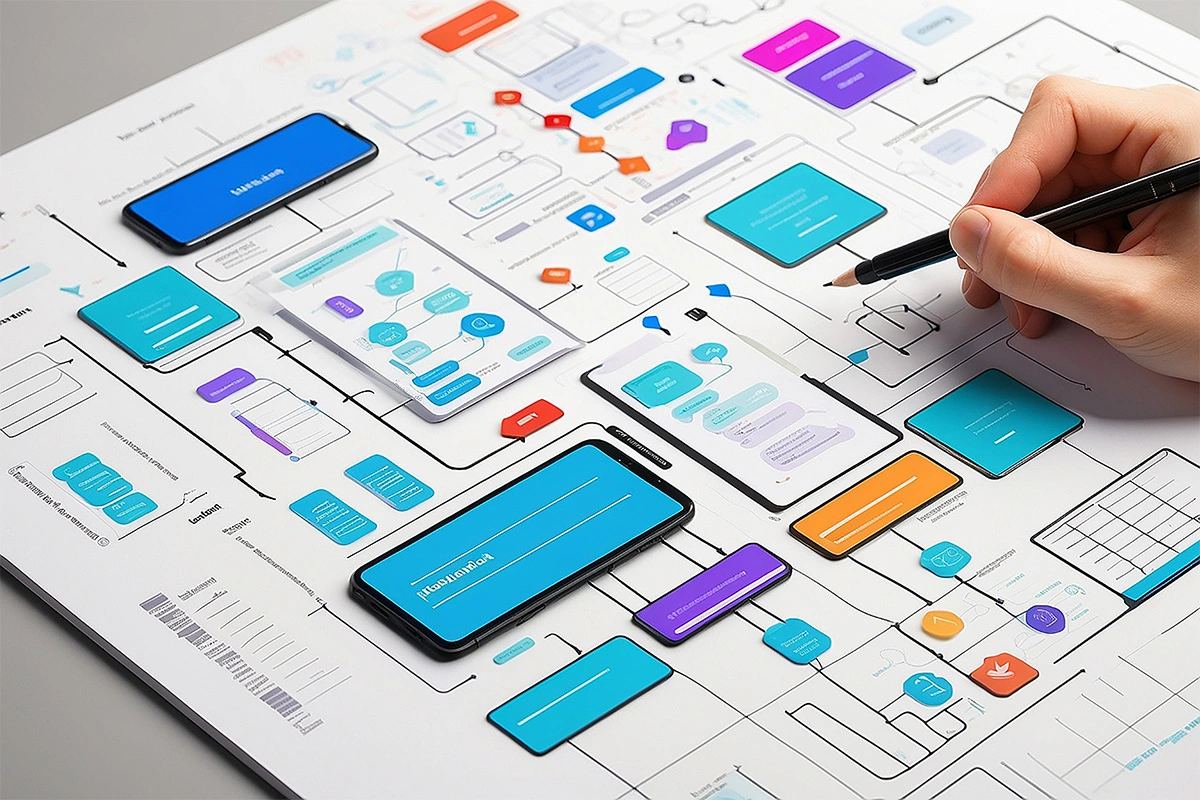Machines that can ‘think’ on their own were regarded as supernatural until the 21st century. Nonetheless, as technology has advanced at a startling rate, smart machines have become ubiquitous. Artificial Intelligence study seeks to imbue inanimate or ephemeral objects with the ability to learn and make decisions. Then, by combining data, machine learning algorithms, and historical data, these intelligent computers may make decisions and predictions.
Artificial intelligence is being incorporated into mobile and web applications by businesses, making them more intelligent, faster, cheaper, and more interactive. Performance Testing is one of the most prevalent uses of AI and ML in software engineering.
Quality assurance is now an indispensable tool for any company operating in the digital sphere. Adopting cutting-edge technology in software development and laying a solid data engineering foundation are crucial steps toward achieving digital transformation.
“The World Quality Report 2018–19 predicts that artificial intelligence (AI) will be one of the most significant trends in quality assurance and testing over the next decade.”
Hence, businesses should prepare themselves accordingly. Thanks to performance testing, businesses and providers of IT solutions may now make more adaptive offerings. By evaluating the user interface and creating test scripts that can work on getting the right reaction time, CPU utilization, throughput, and memory consumption, AI technology has the potential to completely reshape the future of performance testing.
This blog aims to demonstrate the potential of AI technology in improving the performance testing processes for future solutions, in keeping with Cuneiform commitment to leveraging modern solutions and innovative technologies to maximize our Quality Assurance services.
What is Performance Testing?
Performance testing is a kind of non-functional software testing that measures an application’s robustness in terms of its speed, scalability, and responsiveness under stress. However, it is usually seen as an afterthought, completed independently, and initiated after functional testing is complete and, in most circumstances, after the code is ready for release, despite its central role in guaranteeing software quality.
Performance testing aims to evaluate the following: application output, processing speed, data transfer velocity, network bandwidth usage, maximum concurrent users, memory utilization, workload efficiency, and command response times.
When putting an app through its paces, performance testing measures how well it holds up under pressure in terms of stability, speed, scalability, and responsiveness. Despite its importance, this phase of software development is often seen as an afterthought, with little attention paid to it before functional testing and the final release of the code.
Brands must extensively test their software to give uninterrupted service to customers.
Testing is time-consuming and might become ineffective over time. New technologies like AI and ML came to the rescue to improve brand performance testing.
“IMARC expects the Indian artificial intelligence market to reach $3,935.5 million by 2028, rising at a CAGR of 33.28%.”
Let me begin by describing the importance of performance testing.
Performance Testing: Importance
A software application’s speed, responsiveness, stability, and scalability are tested under different workloads and situations. It is a vital element in the software development lifecycle, especially for tech-heavy brands. This testing uncovers runtime faults, performance optimization concerns, latency, throughput, response times, load balancing, and more.
Brand growth requires performance testing. It improves app responsiveness, loading time, and any-context stability as an umbrella testing methodology. Thus, marketers must do performance testing to guarantee the system meets production service requirements and provides a fantastic user experience.
To reduce the high cost of production performance issues, constant performance testing is recommended. Technology-based brands need performance testing. It improves user experience, revenue, customer loyalty, scalability, and risk mitigation.
Why Performance Testing Is Necessary
Companies conduct performance tests for at least one of the following motives:
- To check if the application’s performance meets expectations (for instance, the system should support up to 1,000 concurrent users).
- Analyze where an application’s processing is slowing down.
- To verify that a software provider’s promised performance levels are accurate.
- To find the more effective method by comparing multiple systems.
- To evaluate robustness during heavy-traffic periods.
What is the Best Time for Running Performance Tests?
Each application has two stages in its lifecycle: development and deployment. In both cases, the product architecture is tested by presenting the program to end users.
Development performance tests concentrate on components (web services, microservices, and APIs). When testing is performed on an application’s components early on, problems are found and fixed at a cheaper cost.
There should be a steady increase in the scope of performance testing as the application takes shape. They may be executed during deployment in specific circumstances (like when it is impossible or expensive to create a development lab environment that is identical to the production environment).
What are the Steps Involved in Performance Testing?

While there is no one “right” way to conduct tests, there is a universal framework that can be used to ensure that your performance tests achieve their intended goals of verifying everything works as expected over a wide range of conditions and pinpointing any shortcomings.
Locate the Testing Area
Before you start testing, it’s important to know exactly how the hardware, software, and network will be set up. Having a thorough understanding of this ecosystem helps testers predict potential issues.
Establish Criteria for Approving Performance
The application’s success criteria should be defined before any testing is done, as they will vary from project to project. Finding a comparable application to use as a benchmark is recommended when you are struggling to define your success criteria.
Create Test Cases for Performance and Planning
Understanding how various user types might interact with your app is crucial for doing credible tests. If you want to run your tests as realistically as possible, you need to first identify the most important scenarios and data points:
- Prepare a setting for testing
- Set up a testing plan
- Conduct and track tests
- Check the results, make the necessary changes, and try again.
The next step after conducting tests is to examine and compile the data. After making the necessary adjustments to fix the problems, new tests should be run to make sure that none of the old ones remain.
Uses of AI in Performance Testing
There are several obstacles throughout the full performance testing lifecycle, including test preparation, test execution, identifying the performance bottleneck, pinpointing the cause of the problem, and implementing a solution.
Many of these difficulties can be eliminated entirely or at least made more manageable for any performance test engineer by the use of AI in performance testing.
Some of the problems that can be handled by incorporating AI into the performance testing lifecycle are as follows.
- Performance testers collect mountains of data during the run itself. Without intelligent systems, data analysis is a difficult undertaking, as you well know.
- Despite careful examination, sometimes pinpointing the source of a slowdown in a complicated system is a daunting undertaking. Here, AI can be of great assistance in performance testing.
Re-Engineering Performance Programming by Making Use of AI
- Improving performance test scripts with artificial intelligence
Performance testers can save time on coding thanks to AI and NLP-enabled automated scripts for Performance Testing. Tools like Salesforce, SAP, Siebel CRM, JD Edwards, and Single Sign On use auto-correlation and auto-parameterization to manage dynamic content. When using AI to script, you can cut your work time by as much as 40 percent.
- Scaling Workloads
A.I.-powered engines can foresee how applications will be used in the future, examine production trends, and estimate workloads realistically, much like Google Analytics.
- Result Analysis
Performance engineers must be well-versed in a wide range of technologies because result analysis is so important to their work. Multi-dimensional transaction error analysis with the use of AI engines can reveal outliers in testing data. There isn’t a tool that addresses this issue in particular right now.
- Monitoring
Tools based on AI allow for continuous monitoring of performance, dependency mapping, root cause analysis, and failure prediction. Improve resilience engineering and application performance monitoring with the help of these technologies, which can send out alerts before problems even arise.
Key Advantages of AI in Testing:

AI can reduce manual labor, improve accuracy, and speed up software testing. To understand why AI is so crucial for software development and testing, let’s analyze the benefits of AI in software testing.
Validation of the Basic Features
In this stage, we evaluate how well the software accomplishes its primary goals. Once this is done, we can make major decisions. Planning business strategy is made easier with a solid software basis.
Absolute Precision
Even skilled testers make mistakes, especially when doing repetitive tasks. This fuelled automation’s popularity. AI consistently completes the same repetitious duties as planned, unlike humans. While AI does repetitive chores, testers may focus on creating useful automation solutions and conducting human-only experiments.
Enhanced Overall Test Coverage
With AI, tests can be expanded and deepened. To test the software, it may swiftly test file contents, data tables, internal program states, and RAM. Unlike manual testing, AI-powered test automation can run over 1,000 test cases at once.
Visual Testing Made Easy
AI checks the accuracy of visual web pages and assesses interface content. Human evaluation of the design makes validation of these tests challenging. Automated testing allows us to snap screenshots and monitor load times. The process of building frameworks, updating DOMs, and summing up risks is all automated in AI testing.
Time and Money Savings
Manual testing is repetitive when sourcing code changes. It costs time and money. An AI-based testing system can do these jobs regularly and for free. Software testing accelerates cost optimization.
Efficiency and Load-Bearing Capacity
Enhancing optimization and load capacity is yet another perk of performance testing. A company can address the volume issue and keep the software program stable despite a large number of users because of the performance measurement.
Improved Problem Tracing
The AI has the innate ability to detect issues. Manual and automated tests both miss bugs and errors, leading to problems down the road. Data and flaws in software grow over time. To help the software development team save time, AI can detect these problems automatically.
Automating API Tests
By automating API testing, users may quickly generate test cases for API quality assurance and get an idea of how well certain third-party tools will function. Most services don’t need to automate their use of hundreds of APIs. In a flash, API functionality can be determined using AI-based algorithms, which examine massive data sets.
AI’s Promising Future in Software Testing
Ten years ago, movements toward increasingly sophisticated AI began. Testing of mobile apps, user interfaces, web functionalities, and self-correcting errors all make use of AI. Because of how effectively these AI features perform, they are likely to be implemented to better the evaluation framework and tools.
Automation is inevitable with AI. As computing power increases, machines will be taught more complex activities. Jobs and difficult problems will be handled by AI.
Overall, AI has the potential to revolutionize testing and speed up R&D for cutting-edge software. In addition, it is possible that AI may demand future testers to stay up with requirements and development or risk being left behind. And hence, Cuneiform Consulting’s engineering solutions have geared up to revolutionize business giants. Our passionate team works tirelessly to solve today’s and tomorrow’s digital business challenges. We also deal with innovative digital platforms that excel in AI and ML.
Want to know how you can use AI/ML development services to enhance your online app? Email us!




